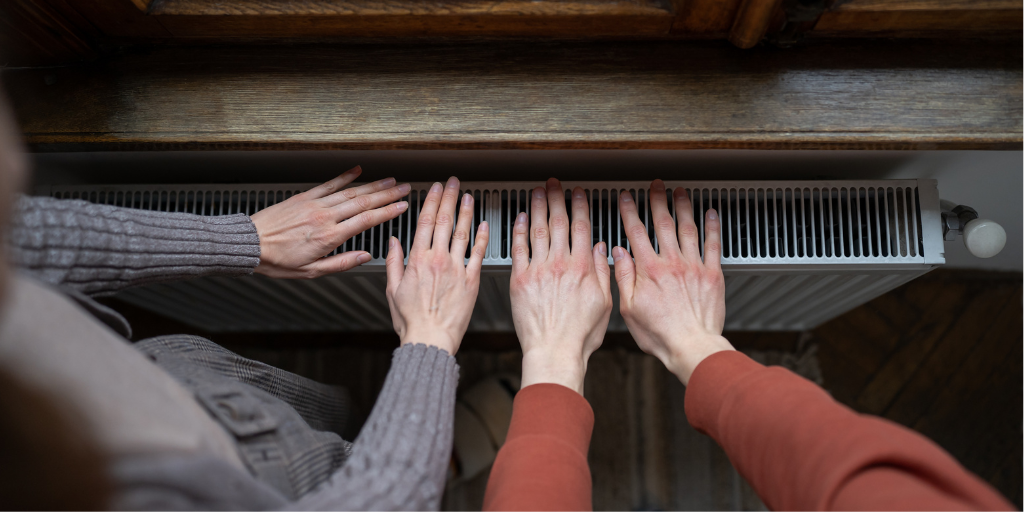Geothermal energy as a sustainable source for district heating is gathering steam around the world. Many municipalities in the Western Balkans urgently need to break free from dirty and expensive fossil fuel-based heating. One little-known way of doing so is to tap the region’s geothermal potential lying right below their feet.
Natasa Kovačević (Bankwatch), Denis Žiško , (Aarhus Centre, BiH) | 26 October 2023

Many towns in the Western Balkans rely heavily on fossil fuels to keep residents’ homes warm during the winter. To put things in context, fossil fuels account for 97 per cent of the total fuel used by district heating systems in the region. Meanwhile, investment in home insulation and sustainable renewable sources for district heating continues to lag. To make matters worse, national and municipal decision makers are increasingly falling back on outdated and unsustainable solutions, which typically involve the addition of coal, fossil gas and large-scale biomass or waste incineration.
But there are much more effective ways to keep homes warm. One of the most promising approaches is geothermal energy. According to the International Renewable Energy Agency (IRENA), the global deployment of geothermal energy for heating and cooling has been growing at a rate of 9 per cent per year, a trend that is set to accelerate in the coming years. There is every reason for countries in the Western Balkans to take advantage of this global energy transition.
In Szeged, Hungary, local policymakers have long recognised the myriad benefits of geothermal energy for heating. Several years on since they embraced their local renewable energy source, over one-third of the heating supply in the town now comes from geothermal sources.
‘I don’t know why other cities don’t care about it. It directly affects our lives,’ says Sándor Nagy, deputy mayor of Szeged, in Bankwatch’s new documentary Clean Heat.
Countries such as Bosnia and Herzegovina (BiH), Albania, Serbia and North Macedonia possess enormous, untapped potential for geothermal energy, particularly in the context of district heating. Thus far, however, many governments in the region have been hesitant to harness this capacity, largely due to the extensive research and technical preparations required.
BiH is one country where investments in geothermal can make a huge difference in addressing issues like air pollution. The government is planning to shift many of the district heating systems currently running on fossil fuels to forest biomass which is unsustainable. Yet, research has shown that around a quarter of BiH’s territory has geothermal potential.
Cities such as Tuzla, Kakanj and Sarajevo need to prioritise improvements in building energy efficiency, laying the groundwork for the installation of fourth-generation district heating systems. In parallel, local authorities should map and develop the potential for geothermal and solar energy, given that these sources of energy can be locally owned and are able to effectively meet heating demand. Research indicates that these three towns have deep geothermal water heating potential ranging from 27 degrees Celsius (°C) in Tuzla to 58 °C in Sarajevo.
Unfortunately, bad practices abound. In Tuzla, for example, city officials are planning to supply the district heating network by burning large quantities of unsustainable biomass and waste, which would considerably aggravate air pollution in the city.
But the city has far more sensible alternatives at its disposal. As an analysis by Bankwatch revealed in 2021, it is entirely feasible for the city to transition from coal-based district heating – currently supplied by the Tuzla power plant – to geothermal and solar-based energy sources supported by technologies such as heat pumps and seasonal heat energy storage.
Elsewhere, the city of Banja Luka, which has already pioneered the use of shallow geothermal heat pumps, could benefit even more from a massive geothermal reservoir in its immediate vicinity. Geological tests have revealed the existence of a hot water lake at a depth of 2000 to 3000 metres, with a temperature of about 100 °C, right below the city. And yet municipal decision makers chose to build a 49-megawatt (MW) biomass district heating facility, which ended up struggling with fuel supply. In fact, in 2021 and 2022, the city had to subsidise Eko Toplane, the local heating provider, with EUR 3.5 million. Then, in 2023, after the company doubled its credit debt compared to 2020, it raised heating prices for end consumers.
Bosnia and Herzegovina should seize the opportunity to harness geothermal sources to secure its energy independence and meet the country’s heat demand. By intensively applying energy efficiency measures in combination with the use of geothermal heat pumps, a significant share of the Western Balkans’ heat energy needs can be met by 2050.
The innovative systems introduced in Szeged and in many other municipalities represent a major step forward. Their experience can be beneficial for many Western Balkan towns as they end their dependence on fossil fuels. The transition to geothermal in district heating systems requires not only substantial investment, but in some cases also the installation of equipment to capture methane emitted during the process. The experience in cities that have already started this transition shows that EU financing can be leveraged to cover a significant proportion of these expenses.
But action can no longer be delayed. As Tamas Medgyes, chief operating officer at Szeged’s district heating company Szetáv, says in our documentary Clean Heat: ‘The costs of a geothermal project are paid upfront, but the costs of fossil fuel projects are paid for by generations to come.’
Never miss an update
We expose the risks of international public finance and bring critical updates from the ground – straight to your inbox.
